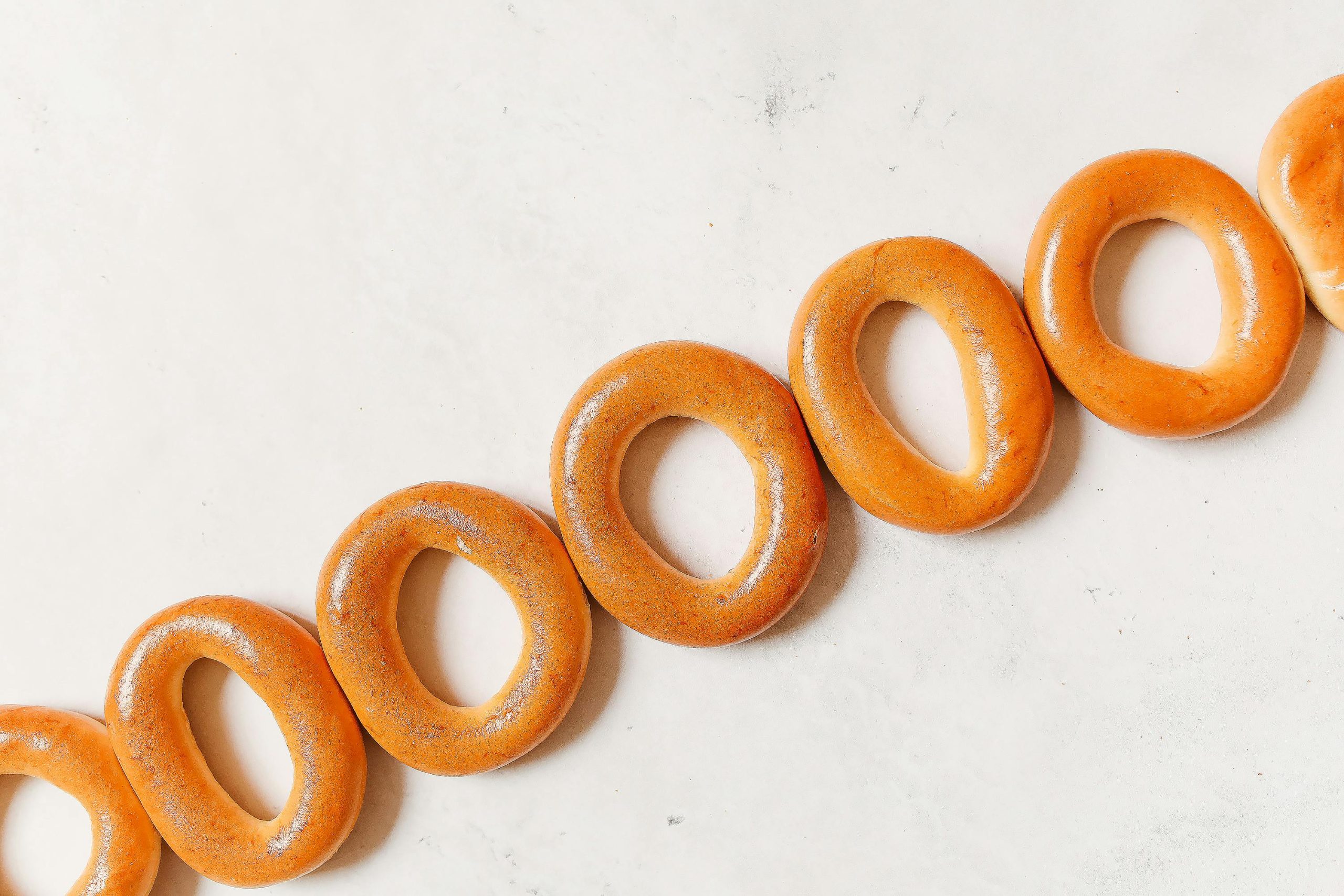There are few things more disappointing than buying a fresh loaf of bread or a box of doughnuts, only to find that it has gone hard and stale by the next day. Consumers have increasingly noticed that the shelf life of many of their favorite bakery items seems to be shrinking. This is not just your imagination. To cut costs and appeal to “clean label” trends, some manufacturers have changed their recipes, removing the very ingredients that once kept their products fresh for longer.

Image Source: pexels.com
1. Grocery Store Bagels
The classic grocery store bagel used to stay soft and chewy for at least a few days. Now, many shoppers complain that bagels from major chains and store brands become tough in less than 24 hours. This is likely due to a change in the recipe, with some bakeries using fewer preservatives and natural fats that once helped the bagels retain their moisture.
2. Packaged Breads
Many popular brands of sliced sandwich bread seem to go from soft to stale with astonishing speed once the bag is opened. While some companies have removed artificial preservatives, they have not always replaced them with effective natural alternatives. This results in a bread that dries out very quickly, forcing you to use the whole loaf in just a couple of days.
3. Store-Bought Doughnuts
A fresh doughnut should be a soft, pillowy treat. However, customers often find that pre-packaged or even in-store bakery doughnuts become hard and lose their flavor in a matter of hours. This is often because the recipe uses cheaper oils that do not provide the same long-lasting moisture as the higher-quality fats that may have been used in the past.
4. Croissants
A good croissant should be flaky on the outside and tender on the inside. In the past, a croissant from a bakery would hold up reasonably well for a day or two. Now, many store-bought croissants seem to go from tender to tough and chewy in a very short amount of time, a sign that the recipe may have been altered to use less butter and other high-quality fats.
5. Hot Dog and Hamburger Buns

Image Source: pexels.com
Summer barbecues are often plagued by stale buns. Many brands of packaged hot dog and hamburger buns seem to dry out and become crumbly almost immediately after you open the package. This is another case where changes in the recipe, designed to speed up production and cut costs, have resulted in a product with a much shorter shelf life.
6. Flour Tortillas
Flour tortillas should be soft and pliable, perfect for rolling into a burrito or a wrap. However, many shoppers find that a package of store-bought tortillas will start to get stiff and crack just a day or two after being opened. The removal of certain fats and preservatives from the recipe means they lose their moisture and flexibility much faster than they used to.
7. English Muffins
An English muffin should have a soft, slightly chewy interior. Many consumers now complain that their favorite brand of English muffin becomes dry and hard very quickly. This forces them to toast the muffin to make it palatable, a sign that the product has lost the freshness it once retained for several days.
8. Sliced “Artisanal” Breads
Many grocery stores now have an in-store bakery that produces “artisanal” breads like sourdough and ciabatta. While these loaves are delicious when fresh, they often contain no preservatives at all. This means their shelf life is extremely short, and they will often be rock-hard by the next day, a fact that can surprise shoppers who are used to packaged breads that last for a week.
9. Muffins
A muffin from a grocery store bakery case should be a moist and tender treat. However, many of these muffins are made from pre-packaged mixes that have been formulated for a low cost, not for a long shelf life. They often taste great on day one but become dry, crumbly, and unappetizing by day two.
The Freshness Trade-Off
The trend toward “cleaner” labels with fewer preservatives can be a good thing. However, it often comes with a trade-off in shelf life that manufacturers do not advertise. In other cases, the shorter lifespan is simply a result of a company using cheaper ingredients. For consumers, it means that we can no longer assume that a bakery item will stay fresh for several days. It forces us to buy smaller quantities more often.
Have you noticed your favorite bakery items going stale faster than they used to? Which product do you think has the shortest shelf life? Let us know!
Read More
